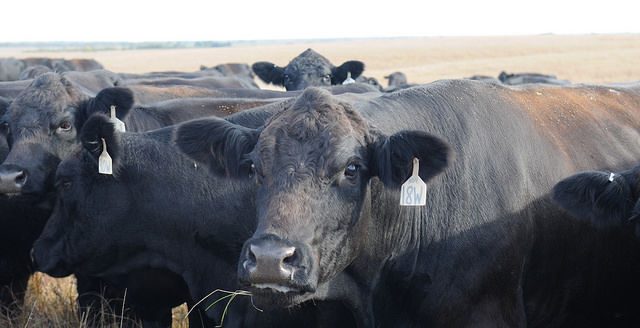The latest United States Cattle on Feed report released on March 21 showed a 2% decline in feedlot numbers.
Cattle and calves on feed for the slaughter market for feedlots with a capacity of 1,000 or more head totaled 11.6 million head on March 1, according to the U.S. Department of Agriculture’s National Agricultural Statistics Service.
The report noted the inventory was 2% below March 1, 2024, when numbers were at 11.84 million head.
Placements in feedlots during February 2025 totaled 1.55 million head, which was 18% below 2024 and net placements were 1.49 million head. That caught the attention of Glynn Tonsor, a Kansas State University agricultural economics professor.
“The magnitude of decline was larger than most would have expected,” Tonsor said. “Time will tell if this is more of a timing issue (with changes in Mexican feeder cattle imports) or a more aggregate reduction in placements here early in 2025.”
During February, placements of cattle and calves weighing less than 600 pounds were 295,000 head, 600 to 699 pounds were 275,000 head, 700 to 799 pounds were 415,000 head, 800 to 899 pounds were 389,000 head, 900 to 999 pounds were 130,000 head, and more than 1,000 pounds were 50,000 head.
Texas and Kansas were both down in numbers at 2.64 million and 2.32 million head, compared to 2.82 million and 2.4 million head, a year ago.
“We may have pulled animals ahead in prior months and may have simply had less available both domestically and via disrupted imports from Mexico, or other factors,” Tonsor said.
Nebraska, the No. 2 state, had 2.59 million head, which was up 30,000 head over the same time a year ago.
The report excludes cattle being backgrounded for only for later sale as feeders or later placement in another feedlot. Placements are steers and heifers put into a feedlot, fed a ration that will produce a carcass that will grade select or better, and are intended for the slaughter market.
Marketings of fed cattle during February totaled 1.63 million head were 9% below 2024.
The Cattle on Feed report a year ago showed the head count at about 11.8 million until May before declining to 11.1 million head in August before trending up again. Tonsor expects the overall inventory to decline relative to a year ago as the year progresses.
Whether demand stays as strong as it has in recent years remains an unknown, he said.
“Here in mid-March we have had a couple months of quickly elevating concerns around macroeconomics,” Tonsor said. “Household financial confidence has slipped and inflation expectations are growing—those are not good for meat demand if those trends continue.”
A final category known as other disappearance showed a 7% decline. That category includes death loss, movement from feedlots to pastures and shipments to other feedlots for further feeding. That total was at 60,000 head in February 2025 compared to 56,000 head at the same period a year ago.
Tonsor said feedlot operators should continue to monitor use of bunks as a practical way to increase efficiency and stay on top of risk management.
“As the industry continues to operate in a period of elevated uncertainty that remains critical,” he said. “What has further grown is importance in price and margin risk management. I encourage regular engagement with your risk management consultants and lending partners accordingly.”
Dave Bergmeier can be reached at 620-227-1822 or [email protected].
PHOTO: Aerial View of a Cow Feed Lot in the Southern Midwest. (iStock │ #1279267170 – Jacob Boomsma)




